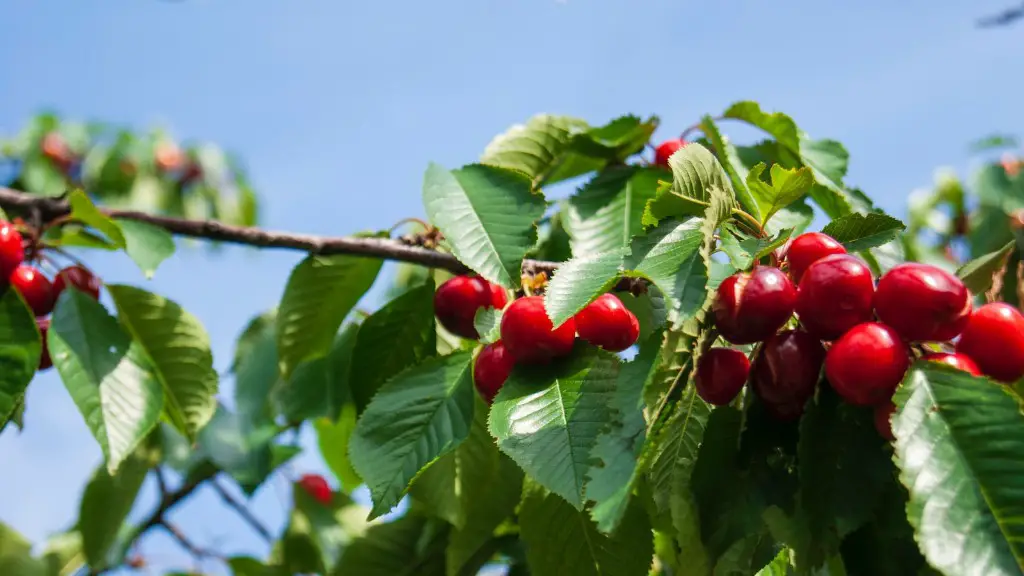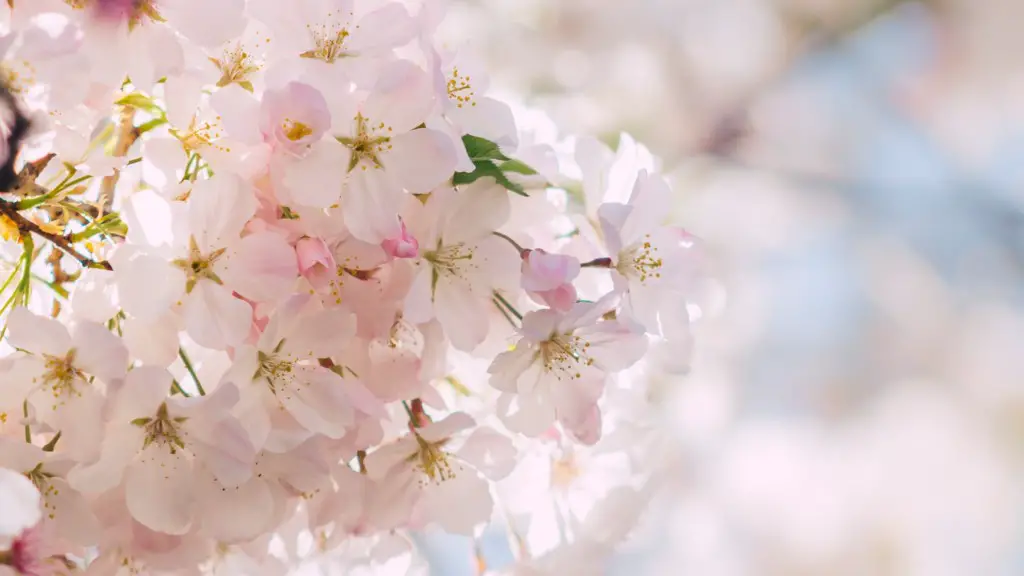Lemon trees are evergreen, meaning they should have leaves all year round. If your lemon tree has lost its leaves, it could be a sign of a problem. There are several reasons why a lemon tree may lose its leaves, including disease, pests, or stress. If you notice your lemon tree losing its leaves, it’s important to investigate the cause so you can take steps to correct the problem.
There are a number of possible reasons why your lemon tree may have lost its leaves. Some common causes include:
1. pests or diseases
2. insufficient water
3. too much or too little fertilizer
4. exposure to cold temperatures
5. transplant shock
Will the leaves grow back on my lemon tree?
When a tree experiences high heat or water stress, it will drop its leaves as a means of coping. However, as long as conditions return to normal, the tree will start to grow new leaves within a couple of weeks. This is because citrus trees are heavy feeders and need more fertilizer than other trees.
The most common citrus leaf problem for lemon, lime, and orange tree leaves is leaf drop. This can be caused by any number of reasons, but the most common is a great fluctuation in temperature. This causes the leaves falling off a citrus tree to continue to drop until the tree can handle the temperature once more.
How do you revive a lemon tree without leaves
If your lemon tree has an extreme nitrogen deficiency, it is important to take corrective measures as soon as possible. Applying composted manure around the base of the tree and watering it deeply can help to improve the situation. Remember not to let the manure touch the trunk of the tree, and be sure to water it deeply to help the nutrients soak in.
If your citrus tree has lost its leaves, don’t panic! This is actually quite common for citrus trees, and is simply their way of letting us know that something is wrong. Usually, the problem is that the tree is not getting enough water or nutrients. Make sure to give your tree plenty of water and fertilize it regularly, and it should start to recover.
What does Overwatered lemon tree look like?
If you notice that your tree’s leaves are yellow or cupped, it could be a sign that you’re watering it too often. Instead of watering it more frequently, try watering it less often but giving it a deeper watering. Citrus trees prefer infrequent, deep watering to frequent, shallow sprinklings.
A watering schedule is important to keeping your lemon trees healthy and happy. A lemon tree should be watered once a week or bi-weekly, depending on rainfall in your area or your humidity indoors. If you’re not sure when to water your lemon trees, just check the top 2 inches of soil.
In which month lemon trees shed their leaves?
As winter approaches, it is perfectly normal for lemon trees to lose leaves. This is because lemons are very sensitive to cold weather. If there is excessive leaf loss, one must look for a specific environmental cause, such as insufficient heat, light or water.
If you notice that the leaves of your lemon tree are starting to turn yellowish, this could be an early sign of overwatering. The leaves will eventually begin to drop, and the roots can become mushy and black. If you think that you may be overwatering your lemon tree, be sure to check the soil to see if it is moist before watering again. You may also want to try cutting back on the amount of water you are giving the tree.
What are three common problems that lemon trees can have
Here are seven problems that lemon tree owners commonly face, along with some tips on how to address them:
1. Lesions On Leaves: Citrus Canker
One of the most destructive diseases of citrus trees is citrus canker, which causes lesions or small black spots on the leaves. If left untreated, it can quickly kill a lemon tree.
To treat citrus canker, you’ll need to remove any affected leaves and then treat the tree with a copper-based fungicide.
2. Black Moldy Spots: Sooty Mold
Another common problem on lemon trees is sooty mold, which appears as black moldy spots on the leaves. It’s actually not a true mold, but rather a type of fungus that grows on the honeydew produced by aphids and other sucking insects.
To control sooty mold, you’ll need to control the aphids or other insects that are producing the honeydew. This can be done with insecticidal soap or other organic controls.
3. Fuzzy Gray Mold And Brown Spots: Botrytis Blight
Botrytis blight is a fungal disease that causes fuzzy gray mold and brown spots on the leaves
If some roots have rotted, keep the plant in a cool position, watering with care, in the hope that the plant may be able to make new root growth and recover. If in doubt as to the reason for a decline in growth and appearance, remove the plant from its pot and check the root condition.
How do you perk up a lemon tree?
Citrus trees do best when they are given a regular supply of nutrients, especially during the warmer months when they are actively growing. A citrus-specific fertiliser will give them the nutrients they need to stay healthy and produce lots of fruit. Keep them well-watered during the drier months, and mulch around the base of the tree to help retain moisture in the soil. Remove any weeds or grass that are competing with the tree for water and nutrients.
A newly potted plant needs to be watered well every alternate day – deep watering is essential so that the root ball gets the necessary hydration. Once the plant is somewhat established, watering can be tapered to twice a week and then once a week or so.
What are the signs of a lemon tree dying
There are a few signs that may indicate a lemon tree is failing. These include leaf drop, abortion of flowers, and shriveling. If you notice any of these symptoms, it is important to take action to save the tree. Lemon trees are susceptible to various diseases and pests, so it is crucial to diagnose the problem and treat it accordingly. With proper care and treatment, a lemon tree can often be saved.
Lemon trees are a popular choice for containers, but they can be more vulnerable to the cold and drought than trees in the ground. A lemon tree in a container has a hardiness zone that is one zone higher than the USDA recommended zone. This means that it can be more difficult to keep a lemon tree in a container alive during extreme weather conditions. If you live in an area with a lot of cold or drought, it is important to take extra care of your lemon tree to make sure it stays healthy.
Why are my lemon tree leaves curling and falling off?
If you see your citrus leaves curling, it could be due to the weather (cold or extreme heat), insects (scale, mealy bug, mites, or aphids), or over-watering. To fix the problem, adjust the watering depending upon the weather.
Symptoms and signs of root rot include reduced vigor, dull green leaf color, poor new growth, and twig dieback. If extensive root damage occurs, the leaves suddenly wilt and dry on the tree. The disease usually starts in larger roots and spreads into the crown.
Why are the leaves on my Meyer lemon tree turning yellow and falling off
If your lemon tree leaves are going yellow, it can indicate that they are not getting enough water. This is often followed by the leaves falling off the plant and starting to shrivel. Too much water can also cause the leaves to fall off, but they usually do not fade in color. The soil should be moist but not waterlogged.
It’s important to keep an eye on your trees after a flood or period of waterlogging, as they may not show signs of distress for some time. If you notice any ongoing symptoms, it’s best to consult a tree specialist.
Final Words
There could be several reasons why your lemon tree lost its leaves. It could be due to a lack of nutrients, too much sun or water, pests, or disease.
Your lemon tree lost its leaves because it was too cold. The temperatures dropped below freezing and the lemon tree wasn’t able to produce the necessary heat to keep its leaves from freezing.





